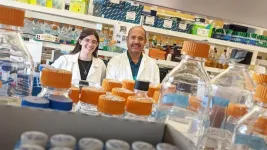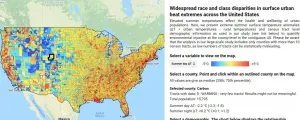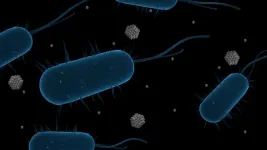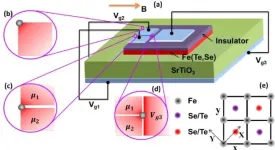The two-thousand-year-old mystery of the havoc-wreaking worm
New research reveals that we know less about the history-altering shipworm than we thought
2021-07-13
(Press-News.org) AMHERST, Mass. - Humans have known for over two thousand years that shipworms, a worm-like mollusk, are responsible for damage to wooden boats, docks, dikes and piers. Yet new research from the University of Massachusetts Amherst published in Frontiers in Microbiology reveals that we still don't know the most basic thing about them: how they eat.
"It's unbelievable," says Reuben Shipway, adjunct assistant professor in microbiology at UMass Amherst, research fellow at the Centre for Enzyme Innovation at the University of Portsmouth, UK, and one of the paper's authors. "The ancient Greeks wrote about them, Christopher Columbus lost his fleet due to what he called 'the havoc which the worm had wrought,' and, today, shipworms cause billions of dollars of damage a year."
Shipworms also play a key role in mangrove forest ecosystems, found throughout the world's tropical regions, and are responsible for cycling a huge amount of carbon through the web of life. "Yet," says Shipway, "we still don't know how they do what they do."
Part of the problem is that the nutritious part of wood - cellulose - is encased in a thick and extremely difficult-to-digest layer of lignin. "Imagine a really thick, unbreakable eggshell," says senior author and UMass professor of microbiology, Barry Goodell.
Certain fungi possess enzymes capable of digesting the lignin, and it has long been thought that symbiotic bacteria living in shipworms' gills also had the enzymes. "We thought that the bacteria were doing the work," says Goodell, "but we now know they are not."
Researchers are still trying to figure out what within the shipworm could be responsible for breaking down the lignin. "I combed through the entire genomes of five different species of shipworm," says Stefanos Stravoravdis, the paper's lead author and a graduate student in microbiology at UMass, "looking for specific protein groups which create the enzymes that we know are capable of digesting lignin. My search turned up nothing."
This, however, is not the end of the story, and the team will be publishing more research in the near future that will help unravel the mystery of how shipworms eat wood. "We need to understand this process" says Stravoravdis.
INFORMATION:
This research was supported by the National Science Foundation; National Institute of Food and Agriculture; U.S. Department of Agriculture; the Center for Agriculture, Food and the Environment; and the UMass Amherst microbiology department.
Contacts: Barry Goodell, bgoodell@umass.edu
Daegan Miller, drmiller@umass.edu
[Attachments] See images for this press release:
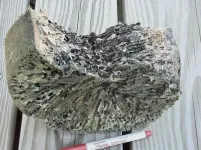
ELSE PRESS RELEASES FROM THIS DATE:
2021-07-13
Middle- to older-aged adults who ate at least three servings of whole grains daily had smaller increases in waist size, blood pressure, and blood sugar levels over time compared to those who ate less than one-half serving per day, according to new research.
Published July 13, 2021, in the Journal of Nutrition, the study by researchers at the Jean Mayer USDA Human Nutrition Research Center on Aging at Tufts University examined how whole- and refined-grain intake over time impacted five risk factors of heart disease: Waist size, blood pressure, blood sugar, triglyceride, and HDL ("good") cholesterol.
Using data from the Framingham Heart Study Offspring ...
2021-07-13
Philadelphia, July 13, 2021 - Consumers may have less trust in food processes that they don't understand, and animal-based foods may be subject to more uninformed scrutiny than other foods due to consumers' perception of higher risk. Dairy producers can benefit from understanding how consumers interpret unfamiliar terms and claims on dairy product labels. In a new END ...
2021-07-13
New research from the University of Nebraska-Lincoln has shown that the mutations arising in the COVID-19-causing SARS-CoV-2 virus seem to run in the family -- or at least the genus of coronaviruses most dangerous to humans.
After comparing the early evolution of SARS-CoV-2 against that of its closest relatives, the betacoronaviruses, the Nebraska team found that SARS-CoV-2 mutations are occurring in essentially the same locations, both genetically and structurally.
The mutational similarities between SARS-CoV-2 and its predecessors, including the human-infecting SARS-CoV-1 and MERS-CoV, could help inform predictions of how the COVID-causing virus will continue to evolve, the researchers ...
2021-07-13
Amsterdam, July 13, 2021 - Mass spectrometry has emerged as an important analytical tool for gaining a better understanding of mechanisms underlying Huntington's disease (HD), alongside the increased availability of cell and animal models of the disease. This END ...
2021-07-13
YorkU pain research finds what you say in the first minute after a vaccine can be key in reducing a child's future distress
New study finds it's not just what say, but when you say it that can keep preschoolers calmer during vaccinations
TORONTO, July 13, 2021 - As we look forward to a fall with hopefully one of the most important vaccination uptakes of children in a generation, a new study provides insights to help parents with reducing post-vaccination distress in younger kids. The study, published in END ...
2021-07-13
WASHINGTON--In cities and towns across the United States, neighborhoods with more Black, Hispanic and Asian residents experience hotter temperatures during summer heatwaves than nearby white residents, a new study finds. It is the first to show that the trend, documented in some major cities, is widespread, even in small towns, nationwide.
According to the new nationwide study, these racial disparities exist because non-white neighborhoods tend to be more densely built up with buildings and pavement that trap heat and have fewer trees to cool the landscape.
"Urban climate is different from temperatures outside the city," said co-author Susanne Benz, an ...
2021-07-13
Antimicrobials are used to kill or slow the growth of bacteria, viruses and other microorganisms. They can be in the form of antibiotics, used to treat bodily infections, or as an additive or coating on commercial products used to keep germs at bay. These life-saving tools are essential to preventing and treating infections in humans, animals and plants, but they also pose a global threat to public health when microorganisms develop resistance to them, a concept known as antimicrobial resistance.
One of the main drivers of antimicrobial resistance is the misuse and overuse of antimicrobial agents, which includes silver nanoparticles, ...
2021-07-13
The COVID-19 pandemic caused an unprecedented disruption to health care delivery, with resources shifted toward telehealth services and mass viral testing. While early studies in the pandemic highlighted differences in health care utilization among patients with commercial insurance, data from publicly insured or uninsured "safety-net" patient populations continue to emerge.
A recent study from researchers at the University of Minnesota and Hennepin Healthcare Research Institute (HHRI) is among the first to examine how different socio-demographic groups used telehealth, outpatient (i.e., clinic), emergency department and inpatient (i.e., hospital) care to test for SARS-CoV-2, the virus that causes COVID-19. ...
2021-07-13
In particle physics, a Majorana Fermion is charge neutral and its antiparticle is just itself. In condensed matter physics, a Majorana zero mode (MZM) is a quasi-particle excitation, which appears in the surfaces or edges of topological superconductors. Unlike the ordinary particles or quasi-particles that obey boson or fermion statistics, MZM obeys non-abelian statistics, a key property that makes MZM the building block for realizing topological quantum computation. Currently major experimental efforts focus on heterostructures made of superconductors and spin-orbit coupled systems (such as semiconducting nano-wires and topological insulators), where evidences of MZMs have been found. Unambiguous detection and manipulation of MZMs in these heterostructures, ...
2021-07-13
North Carolina State University researchers have created insecticide-free, mosquito-resistant clothing using textile materials they confirmed to be bite-proof in experiments with live mosquitoes. They developed the materials using a computational model of their own design, which describes the biting behavior of Aedes aegypti, the mosquito that carries viruses that cause human diseases like Zika, Dengue fever and yellow fever.
Ultimately, the researchers reported in the journal Insects that they were able to prevent 100 percent of bites when a volunteer wore their clothing - a base layer undergarment and a combat shirt initially designed for the military - in a cage with 200 live, disease-free mosquitoes. Vector Textiles, an NC State startup company, ...
LAST 30 PRESS RELEASES:
[Press-News.org] The two-thousand-year-old mystery of the havoc-wreaking worm
New research reveals that we know less about the history-altering shipworm than we thought

